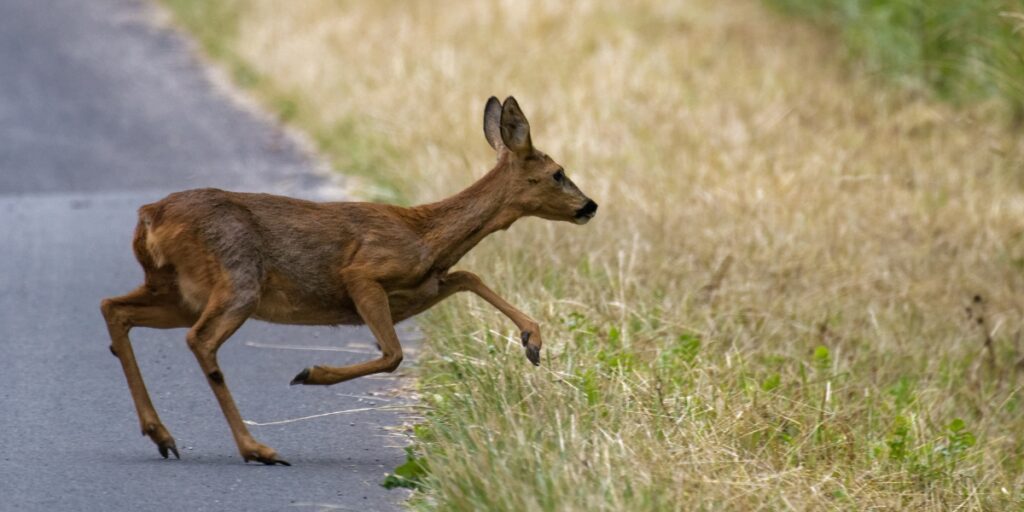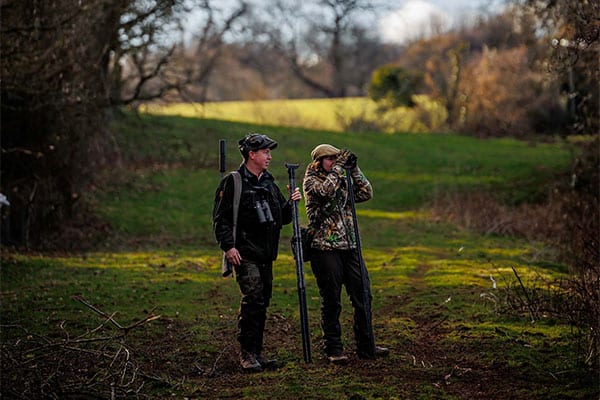
Applications now open for Defra deer chiller trailer grants
Applications for Farming Equipment and Technology Fund are now open and include grants of up to 50 per cent for deer chiller trailers.
Get information on the legal shooting season for mammals and birds in the UK.
Apply for funding for your project or make a donation today
Comprehensive information and advice from our specialist firearms team.
Everything you need to know about shotgun, rifle and airgun ammunition.
Find our up-to-date information, advice and links to government resources.
Everything you need to know on firearms law and licensing.
All the latest news and advice on general licences and how they affect you.


With an increasing number of deer being injured on our roads, there is an urgent need for more people to deal with them, says BASC’s head of deer and woodland management, Martin Edwards.
A sad result of our busy road network is that wildlife, and especially deer, are increasingly involved in accidents with vehicles. We call such accidents DVCs (deer-vehicle collisions). I think we adopt these three-letter acronyms (TLAs) partly to avoid the reality of what we are discussing. Another often used in this context is HAD, which stands for humane animal dispatch.
The reality of performing HAD is pretty unpleasant but necessary to prevent any further suffering of an injured animal. It is a duty undertaken by a small sector of the shooting community. It’s primarily a voluntary service to society and, more importantly, the animals themselves.
My aim here is to make the work of the various HAD volunteers who operate around the country more visible. I also hope to persuade more members to take on this important role.

With road traffic and deer populations both increasing, the DVC situation is only going to get worse. We have no idea what the scale of the problem actually is. There is no requirement to report a DVC and the insurance companies do not collate this data.
The last accurate figures we have estimate over 70,000 DVCs per annum. However, this was from a survey undertaken over 20 years ago. A drive down one of our busier highways, such as the A34 from Oxford to Winchester, would suggest that the problem is much larger now. You can often see a deer carcass on every mile of verge that whole journey.
If the deer is killed outright then there are no animal welfare issues. However, there may be human injuries and occasionally human fatalities. If the animal is maimed, you have an injured deer on, or next to, a busy road. Situation like that could quite easily lead to further accidents. In such cases, you must call the police immediately using 999.
Different police forces have different means of dealing with injured deer. All the main deer management organisations have been working closely together to persuade forces to adopt a standard methodology.
The standard methodology that we are advocating is that used by the Hampshire & Isle of Wight Constabulary. This has been in place for many years now and has been refined to a point that they are now happy to share it with other forces.
In a nutshell, Hampshire Police use trained and vetted volunteers to dispatch injured deer on a public highway. There are currently 37 volunteers who are geographically spaced around the county and the control room will call out whoever is closest to the incident. The call can come at any time of day or night, so if you are not able to attend they will then go down the list to find the next nearest.
The HAD volunteers are provided with amber lights for their vehicles, fluorescent jackets and other PPE (personal protective equipment). They do need to have their own vehicle (insured for business use) and firearms approved for HAD. You can claim expenses but none currently do, as volunteers see their role as an important public service.

In most instances, the actual dispatch is quick and straightforward. Many of you will have had to do this to an animal injured by a poorly placed shot.
The added difficulty is that you are undertaking this action at the side of a busy road. You will come across many potential ricochet hazards and sometimes members of the public watching. That is why there should always be a police officer present at the scene. They should be able to close the road, make people stand back at a safe distance and let you get on with the job in hand.
Obviously, letting a civilian loose in a public place with a lethal firearm is a massive leap of faith by the police. Therefore you have to go through various stages of training and assessment before they will actively deploy you as a HAD volunteer.
The agreed model is that anyone applying to be a HAD must now have passed the recently developed DMQ (Deer Management Qualifications) course on Humane Animal Dispatch. You then go to a selection interview, with a current HAD volunteer and police officer to ensure you have the right aptitude. If selected, you are then put through a very rigorous practical assessment. This involves the police firearms unit, covering some realistic scenarios you are likely to encounter.
Some police forces still undertake this work using internal resources, i.e. their own trained firearms personnel. There are several issues with this solution, many of which relate to animal welfare.
The first is that the firearms/ammunition issued to police are rarely suitable to guarantee a humane kill. The preferred tool recommended for use by a HAD is actually a 12-bore shotgun loaded with either ‘safeshot’ ammunition for ranges less than one metre or large shot for further away.
Secondly, most ARVs (Armed Response Vehicles) are deployed in major cities. This means they’re usually a long way from the incident, which results in a prolonged wait before the deer is dispatched.
Finally, most armed police are not trained in animal anatomy to effect a humane dispatch shot. And neither do they know how an animal will respond when shot. Then there are the economic arguments, too. ARVs are expensive to deploy. And when they are out dispatching wounded animals, they are not available to fulfil their prime role of protecting the public.
Closing a road while an animal is dealt with is also expensive. The bigger the road, the bigger the impact on the economy. The state-run agency National Highways estimates the cost to the economy from a two-hour delay on a busy stretch of motorway following a two-lane closure is more than £130,000.

So, the answer surely must be the use of trained volunteers that the police have entrusted to undertake this important role on the behalf of society. We will be working with the police to publicise when a particular force is looking to enlist volunteers, so please keep an eye on our website.


Applications for Farming Equipment and Technology Fund are now open and include grants of up to 50 per cent for deer chiller trailers.

Martin Edwards considers why and how formal deer management plans are essential tools for those tasked with controlling deer populations.

Read BASC’s statement in response to the Government’s announcement regarding restrictions on the sale and use of lead ammunition.
Sign up to our weekly newsletter and get all the latest updates straight to your inbox.
© 2025 British Association for Shooting and Conservation. Registered Office: Marford Mill, Rossett, Wrexham, LL12 0HL – Registered Society No: 28488R. BASC is a trading name of the British Association for Shooting and Conservation Limited which is authorised and regulated by the Financial Conduct Authority (FCA) under firm reference number 311937.
BASC Direct Ltd is an Introducer Appointed Representative of Agria Pet Insurance Ltd who administer the insurance and is authorised and regulated by the Financial Conduct Authority, Financial Services Register Number 496160. Agria Pet Insurance is registered and incorporated in England and Wales with registered number 04258783. Registered office: First Floor, Blue Leanie, Walton Street, Aylesbury, Buckinghamshire, HP21 7QW. Agria insurance policies are underwritten by Agria Försäkring.
If you have any questions or complaints about your BASC membership insurance cover, please email us. More information about resolving complaints can be found on the FCA website or on the EU ODR platform.